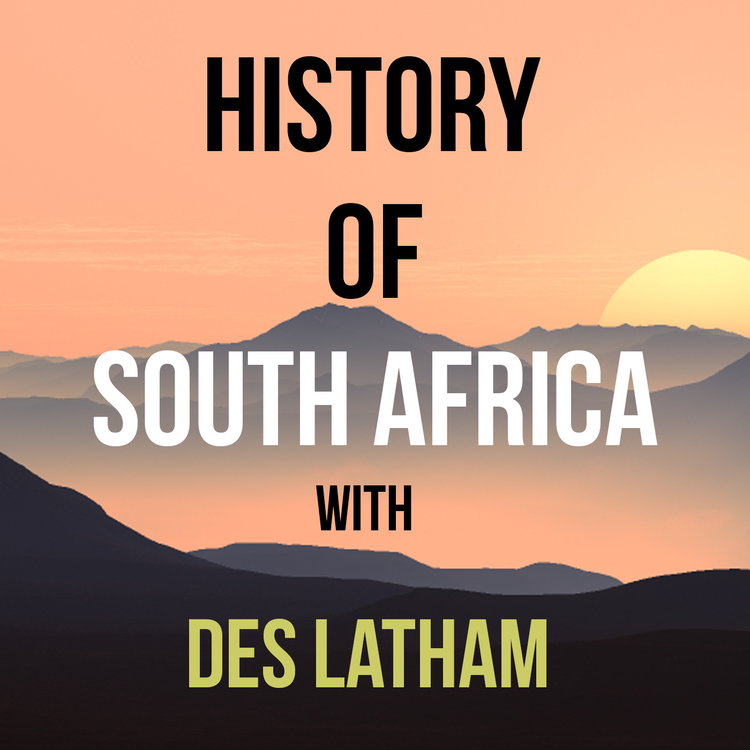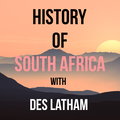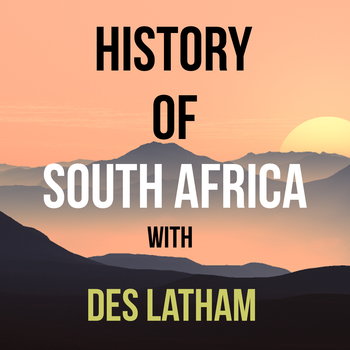
Episode 156 - The Battle of Congella leaves 34 British soldiers dead on a moonlit Durban beach
Loading player...
When we left off last episode, Captain Thomas Smith and two companies of the 27th Inniskilling Regiment, an 18 pounder that had just arrived by ship, two six pounder field guns, a small section of the Royal Artillery, a hand full of Royal Engineers, Sappers and miners, along with a company of Cape Mountain Rifles had formed their laager at level area to then north of Durban CBD today - where the Old Fort can be seen.
Just a note - the 27th Inniskilling were an Irish infantry regiment of the British army, formed in 1689 so they’d been around the block so to speak.
Boer commander Andries Pretorius had called his men to where he’d setup camp at Congella and by the time this battle commenced, there’d be more than 200 ready to face Smith’s professional soldiers.
The British were hopelessly optimistic in their plans as you’re going to hear. Some of the English traders left at Port Natal, Henry Ogle for example, had warned Captain Smith that his force was somewhat underwhelming and that the Boers were not to be taken lightly.
Smith unfortunately had no choice but to impose himself.
He’d marched to Durban from Umgazi, and the last orders he’d received from Cape Governor Sir George Napier was to secure the bay for the British Empire. I’ve already explained that back in England, the Secretary for War and the Colonies Lord Stanley had changed his mind and ordered Smith back to base but his letter was going to arrive woefully too late.
Captain Smith was aware of the Boer capacity to fight in bush, so he ordered his men to march along the beachfront. A stunning full moon was shining, causing the waves to fluoresce.
Anyone who’s marched on a beach knows that its very difficult, made worse by the horses and of course, dragging the three guns along - while they were obviously now clearly visible to anyone lurking in the bush on the dunes.
It was low tide, so the going was good at first as the hard sand made things a little easier. The British also deployed a howitzer on a long boat from the Mazeppa which was how folks made difficult trip between ships at anchor in Durban Bay and across the dangerous sandbar to the beach.
Smith was hoping that the longboat could row to the beach at high tide to offload the howitzer — but that was seven hours away. There were a lot of what if’s that dogged Smith’s plan as you can see.
Pretorius had also given strict orders that no Boer should fire until the British troops were within 100 metres of the camp. The burghers waited until at Pretoriu’s command, five shots rang out. An ox at each of the three gun carriages was shot dead by the sharpshooters only a few metres away in the bush. That wasn’t all, Lieutenant Wyatt and a private of the Inniskilling regiment were both shot in the head and killed instantly.
Pandemonium broke out in the British ranks.
The surviving oxen panicked, but were now dragging the gun and a dead ox with them, while the canon were actually pointed away from the Boer laager so couldn’t even be brought to bear and fired. The British in their redcoats dived onto the sand, firing back into the darkness.
The soldiers were caught in the full moon light which back in these days of zero light pollution, was like a flare in the sky.
The English were in big trouble.
Just a note - the 27th Inniskilling were an Irish infantry regiment of the British army, formed in 1689 so they’d been around the block so to speak.
Boer commander Andries Pretorius had called his men to where he’d setup camp at Congella and by the time this battle commenced, there’d be more than 200 ready to face Smith’s professional soldiers.
The British were hopelessly optimistic in their plans as you’re going to hear. Some of the English traders left at Port Natal, Henry Ogle for example, had warned Captain Smith that his force was somewhat underwhelming and that the Boers were not to be taken lightly.
Smith unfortunately had no choice but to impose himself.
He’d marched to Durban from Umgazi, and the last orders he’d received from Cape Governor Sir George Napier was to secure the bay for the British Empire. I’ve already explained that back in England, the Secretary for War and the Colonies Lord Stanley had changed his mind and ordered Smith back to base but his letter was going to arrive woefully too late.
Captain Smith was aware of the Boer capacity to fight in bush, so he ordered his men to march along the beachfront. A stunning full moon was shining, causing the waves to fluoresce.
Anyone who’s marched on a beach knows that its very difficult, made worse by the horses and of course, dragging the three guns along - while they were obviously now clearly visible to anyone lurking in the bush on the dunes.
It was low tide, so the going was good at first as the hard sand made things a little easier. The British also deployed a howitzer on a long boat from the Mazeppa which was how folks made difficult trip between ships at anchor in Durban Bay and across the dangerous sandbar to the beach.
Smith was hoping that the longboat could row to the beach at high tide to offload the howitzer — but that was seven hours away. There were a lot of what if’s that dogged Smith’s plan as you can see.
Pretorius had also given strict orders that no Boer should fire until the British troops were within 100 metres of the camp. The burghers waited until at Pretoriu’s command, five shots rang out. An ox at each of the three gun carriages was shot dead by the sharpshooters only a few metres away in the bush. That wasn’t all, Lieutenant Wyatt and a private of the Inniskilling regiment were both shot in the head and killed instantly.
Pandemonium broke out in the British ranks.
The surviving oxen panicked, but were now dragging the gun and a dead ox with them, while the canon were actually pointed away from the Boer laager so couldn’t even be brought to bear and fired. The British in their redcoats dived onto the sand, firing back into the darkness.
The soldiers were caught in the full moon light which back in these days of zero light pollution, was like a flare in the sky.
The English were in big trouble.

